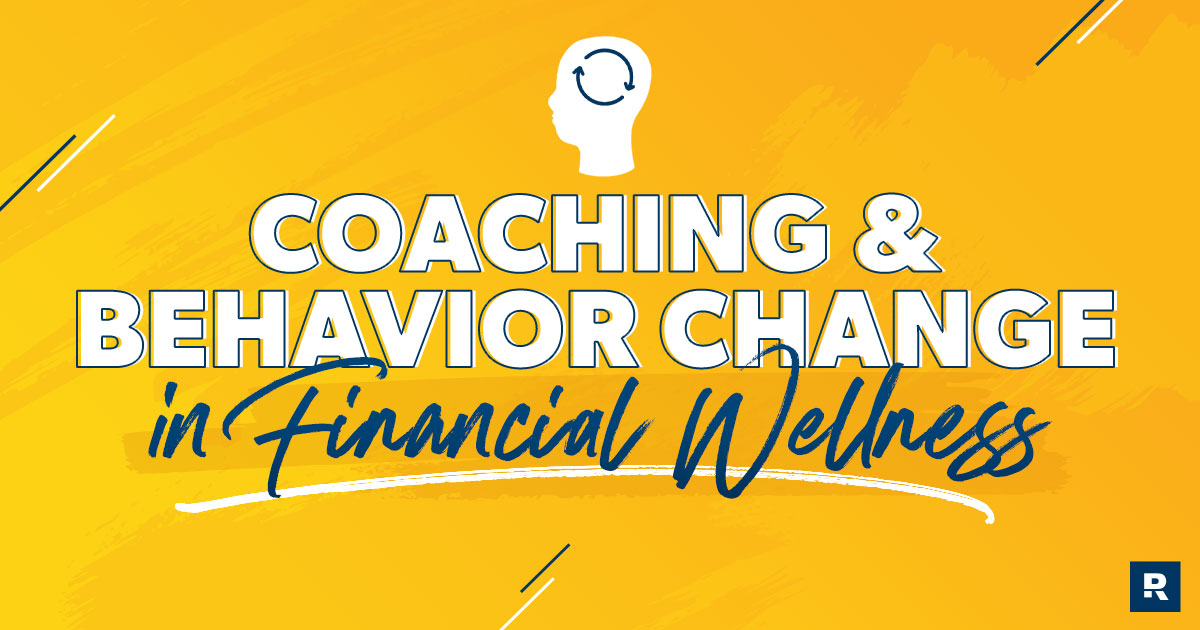Although it’s a popular concept, there’s still a lot of confusion in the employee benefits space about the true definition of financial wellness. But before you offer any new benefit to your employees, you need to be confident you are making the right choice. You need a program that provides real behavior change. It should include motivation, a clear plan, easy-to-use tools, personalization, and education that empowers them to change their behaviors with money. Above all, it needs a coaching element, online or offline, that will help your team achieve long-term results.
Engagement vs. ROI
The 2017 Ernst & Young report on Understanding the ROI of Employee Financial Wellness highlights this reality. Although many of the companies surveyed expect the ROI from a financial wellness benefit to justify the expense, the authors say the real evidence of a program’s success is employee engagement.
“Encouraging engagement starts with a holistic, integrated communications effort to inspire participation,” the authors say. And they emphasize that in addition to the materials and tools offered in a financial wellness program, employees crave “a road map that will enhance their knowledge about a broad range of financial topics, and empower them to take the necessary steps toward financial wellness.” (1)
Getting hung up on the ROI of financial wellness tends to hide an underlying assumption some employers have about how personal finance works. As a business leader, it’s easy to believe that an employee’s lack of financial wellness is solely a result of lacking information. And many companies make that assumption, as the same report shows.
The authors asked those companies not currently offering a financial wellness program to name what they saw as the potential benefits of introducing one, and the top two answers were helping employees to boost retirement savings (50%) and helping them to boost savings overall (38%).
While it’s certainly true that a financial wellness benefit can help employees become better savers, a great program must have a larger goal of outlining a clear plan to do so and providing the inspiration and desire to change bad habits like debt into good ones like budgeting and investing. Every business owner cares about dollars, but an exclusive focus on the numbers ignores the crucial question of holistic behavior.
Employee engagement can be just as prominent in a company’s success as ROI. What’s more, when workers experience a turnaround in their personal finances, it has a palpable impact on their employers’ bottom lines.
How Coaching and Behavior Change Deliver Real Financial Wellness
Pinpointing the ROI of a financial wellness program might be elusive, but the main benefits for employers who offer one are clear. The Ernst & Young study showed that companies who offer such a benefit also see a strong correlation in the following employee metrics:
- Retention (56%)
- Health (50%)
- Productivity (45%)
What employer wouldn’t want to have a healthier, happier and more loyal team? Those are the results that come from employees who are beginning to see the pieces of their financial wellness puzzle fit into a comprehensive picture of health. It starts when your company provides them with trusted content in a flexible format. As employees begin to progress with their finances, it has a way of inspiring positive change in other areas as well, including their health, workplace engagement and overall sense of wellbeing.
Click here for free, SHRM-accredited webinar content on all things HR and business leadership.
Tools, data and a range of topical information are all great, and they all have their place in a financial wellness benefit. But they’re insufficient to inspire real and lasting change without the additional elements of a clear plan for success and the motivational power that comes from coaching . Having online or offline coaching elements available 24-7 will help participants reach the lasting behavior change needed to function as more productive, happier employees.



